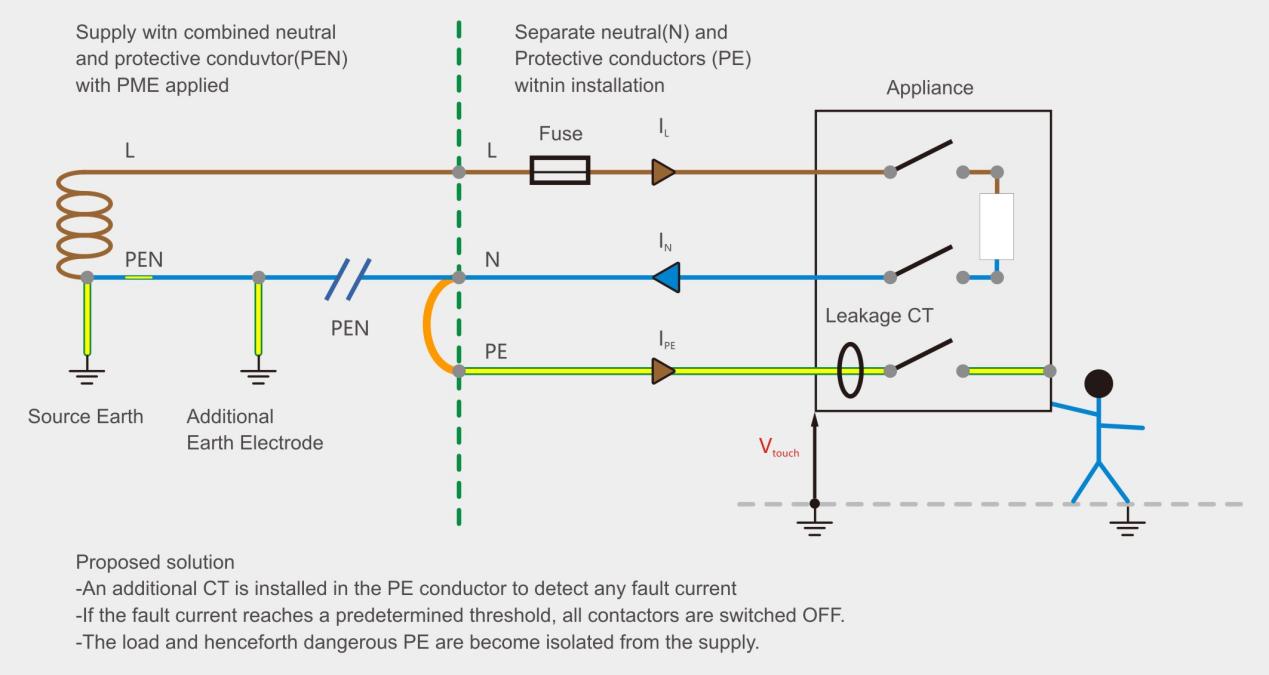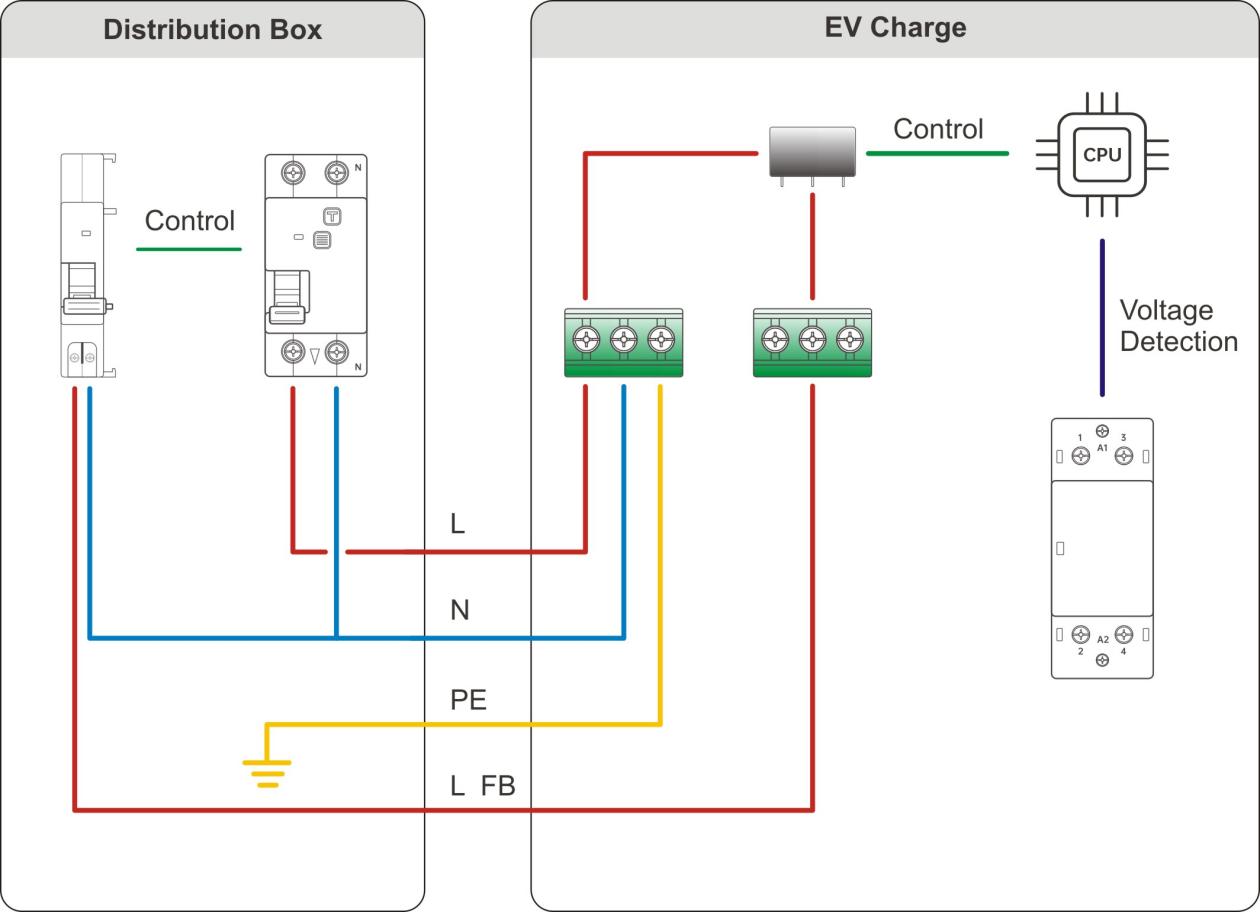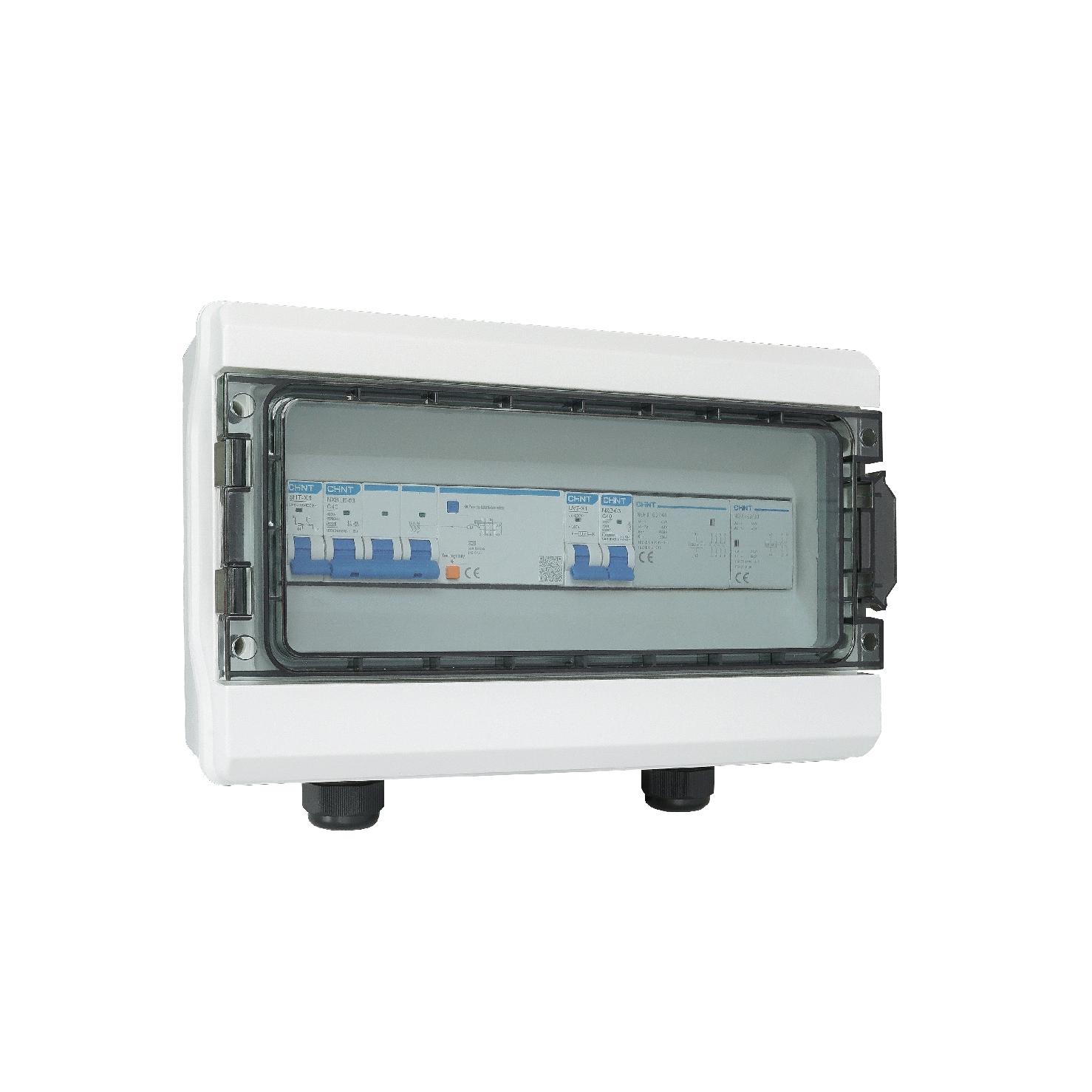PEN Fault Detection-What EV Owners Need to Know
In recent years, the supply of traditional energy has become increasingly tight, and the pressure on environmental protection has increased. The new energy has gradually become an emerging trend. The vigorous promotion of electric vehicles will achieve green, low-carbon, and sustainable development. Therefore, with the advancement of charging technology and the expansion of infrastructure, as well as the improvement of the industrialization level and technological innovation capabilities of electric vehicles, the global electric vehicle market is developing rapidly. On the other hand, the popularity of electric vehicles has led to the rapid rise of the EV charger industry, and the supply and demand have increased year by year. It is also necessary for electric vehicle owners to do their homework on EV chargers before purchasing a car.
1. Concept Notes
Most UK families are wired with a PME system (Protective Multiple Earth), where the earth wiring runs to a main supply point connected to a neutral conductor which is earthed at multiple points. These systems have the potential for a rare fault called neutral failure, where an upstream disconnection due to degrading or corrosion could increase the risk of electric shock.
At this time, it is very important that the current is properly routed through the earth wire. The earth wire is a wire that is connected to the ground, the casing or the reference potential zero in an electrical system or electronic equipment. If British electric vehicle owners want to avoid the hazard of electric shock to the human body caused by the neutral fault, they must purchase and install earth rods to follow this basic earthing rule, when installing household EV chargers.

Earth Rod
The earth rod is designed and produced on the theoretical basis of improving the internal conductivity of the earthing conductor and reducing the external soil resistivity of the earthing conductor. When it comes to installing earth rods, different construction methods need to be adopted according to the specific conditions of the earth rod construction. When using heavy hammer construction under uniform soil conditions, if only a single rod is driven, the pointed end of the earth rod must be installed. Install drill bits (impact-resistant bolts) to avoid damage to the copper layer when the earth rod is driven deep. In the case of deep earthing, multiple earthing rods can be connected with connectors until the required length, so that the earthing rods can achieve a good electrical connection effect. When drilling deeply into soils that are difficult or impossible to penetrate, it is necessary to use drilling tools such as electric, pneumatic, and oil-driven machinery to drill through the rock.
As mentioned above, the earth rod must be installed by professional technicians. It may be convenient and safe for the installation of household chargers, but for multiple charging stations in public places, the amount of work will be large.
2. Turning Point (Updates to Regulations)
In 2020, the Institution of Engineering and Technology (IET) and the British Standards Institution (BSI) introduced Amendment 1 to the 18th Edition IET Wiring Regulations to regulate standards for installing EV chargers without earth rods. In response to new regulations, to improve the user experience of UK consumers, BENY Launched the built-in PEN Fault Detection function of an EV charger. (optional)

3. Function Explain
PEN Fault Detection: For TN-C-S systems without grounding at the user’s end (as shown above), when the PEN line to the household is cut off due to a line fault and the rear end of the PEN line is in suspension without repeated earthing, and the distribution box RCD is not working properly at this time, the voltage of the protective ground PE is equal to the voltage of the fire line L. If not equipped with this protection,the shell of the EV in charging will be charged with a voltage equal to the fire line L voltage. If there are no other appliances except the EV charger, the leakage current will exceed 30mA and the person will not be able to disengage himself, which is a safety hazard; if there are even other appliances, the leakage current can easily exceed 100mA, which is very fatal.

PEN Fault Detection Function Explain
If the user uses an EV charger equipped with PEN protection as shown above (model with – E suffix), its internal design has a contactor to cut off the ground, once the PEN line is cut off, the contactor KM1 and KM2 immediately and automatically disconnected, there is only a weak leakage current between CP and PE to L line, its current value is less than 1mA, which is the smallest perceived leakage current of the human body, people can disengage themselves, no safety risks.
After talking about PEN Fault Detection of EV charger, we have to mention the BENY Combiner Box. BENY’s 1-phase and 3-phase combiner box models are BCPN-P1&BCPN-P3, which contain PEN Fault Protection and Contactor Adhesion Protection functions.
BENY 1 Phase Combiner Box
BENY 3 Phase Combiner Box
Contactor Adhesion Protection: When the contactor in the charger is stuck due to current or short-circuit failure, the charger gun or the wires in the socket type charger will be live, brings the danger of electric shock to people. The charger with contactor adhesion protection can avoid the danger.

Contactor Adhesion Protection Function Explain
The main control chip of the charger keeps detecting the voltage of the contactor output; If there is an AC voltage is detected at the output of the contactor when the charger is not operating. Then the charger will run the fault protection routine to alarm the lights and control the on-board relay to close. As shown in the figure, the trip unit will drive the leakage protector to trigger and disconnect the power supply.
4. Conclusion
In general, before the promulgation of the regulations in 2020, the installation of earth rods after buying EV chargers in the UK seemed to be a necessary part, but BENY’s built-in PEN Fault Detection EV chargers have successfully solved this complex problem. If you choose BENY’s EV charger and combiner box with the PEN Fault Detection function, you can achieve PEN protection during the charging process without installing an earth rod. BENY is committed to the R&D of the new energy market, providing a more convenient and safer way of life for consumers of EV chargers. Contact us now for information and quotation!







